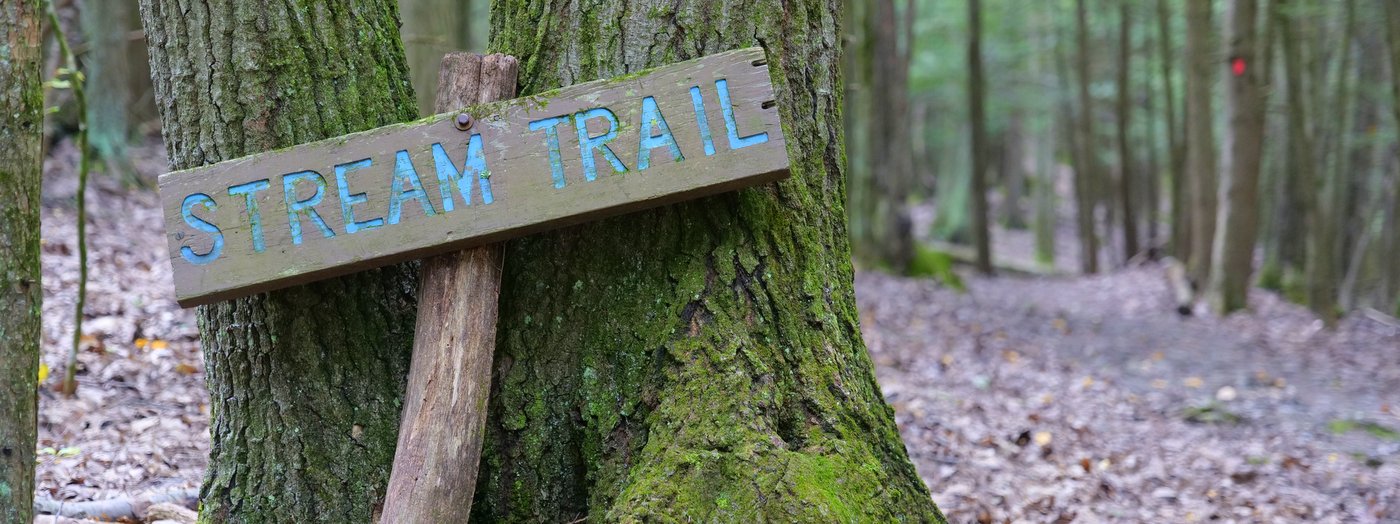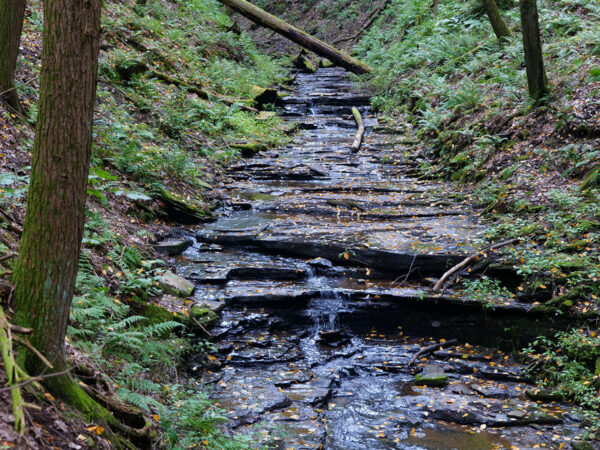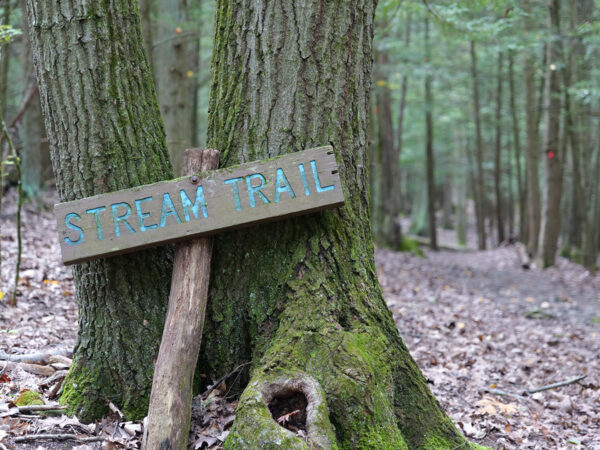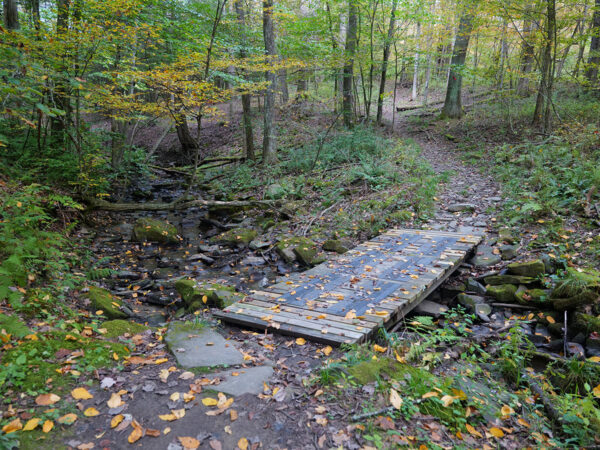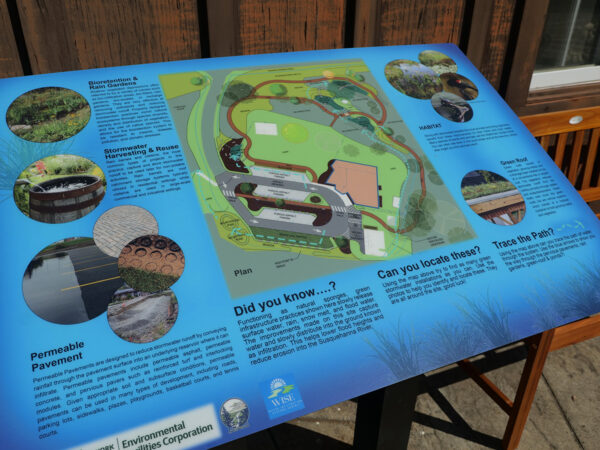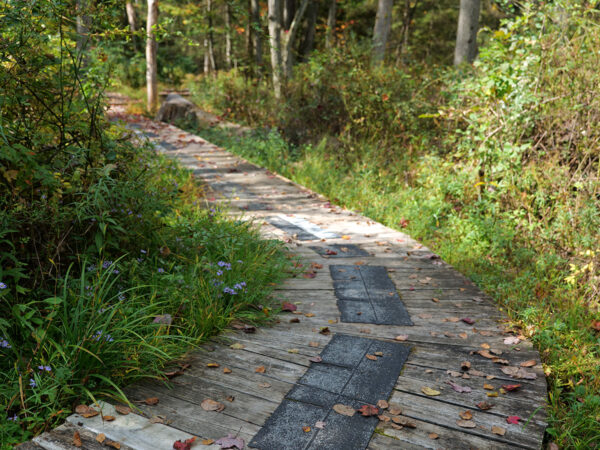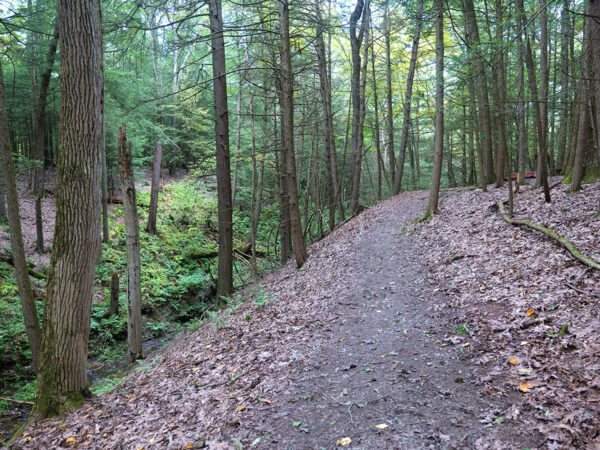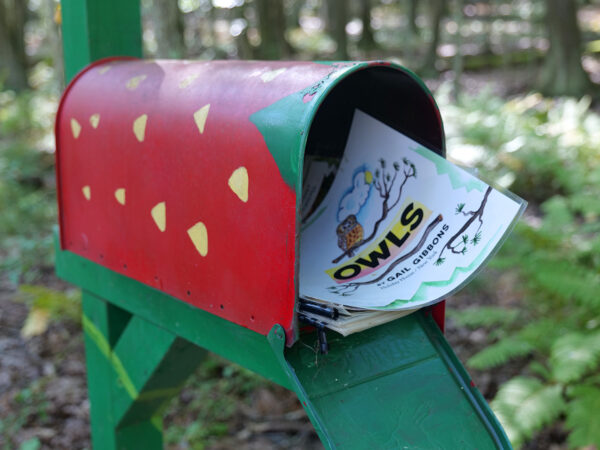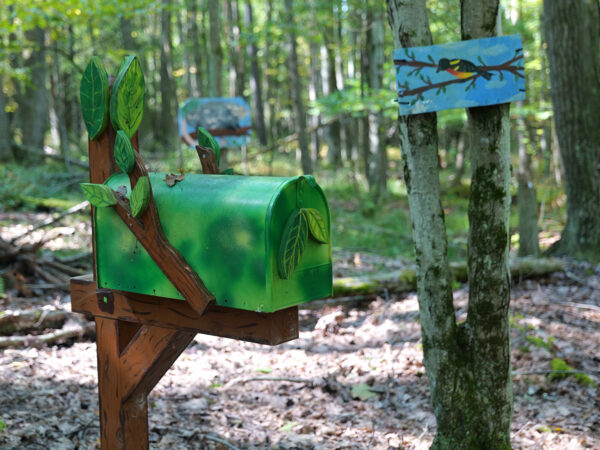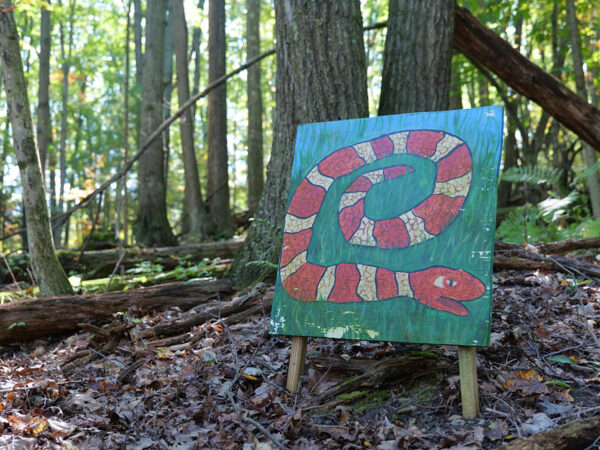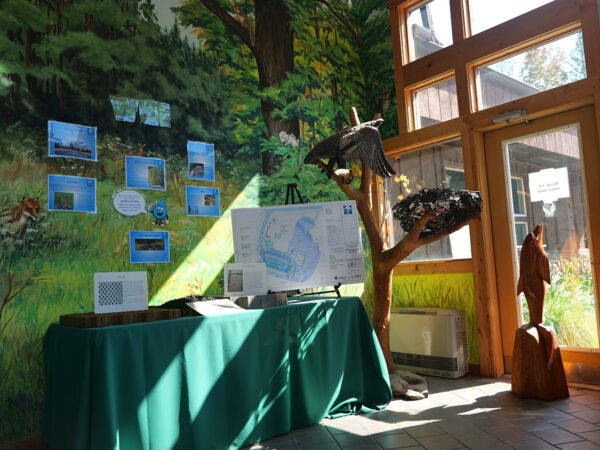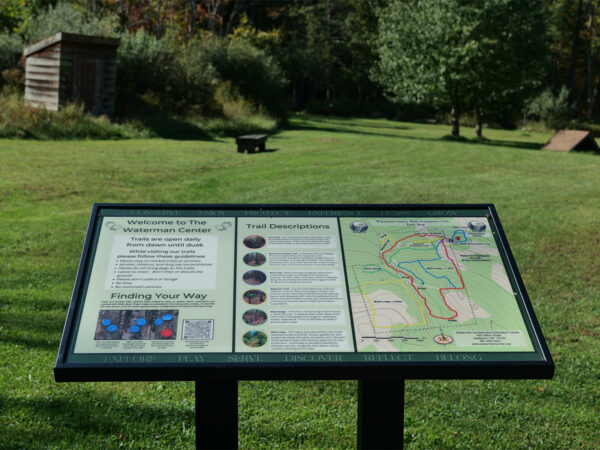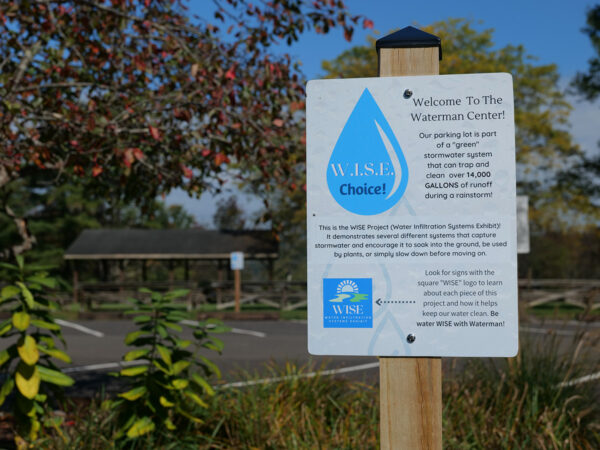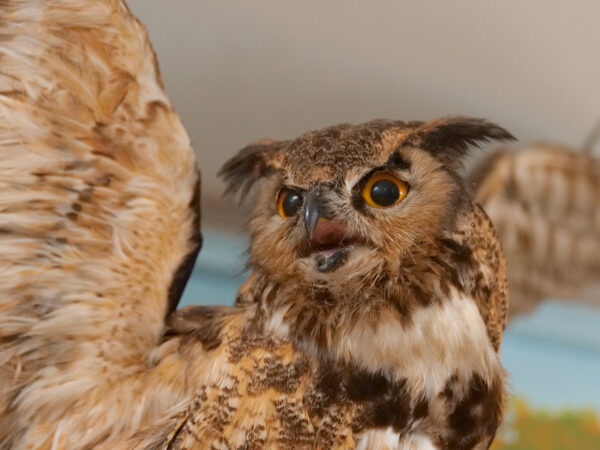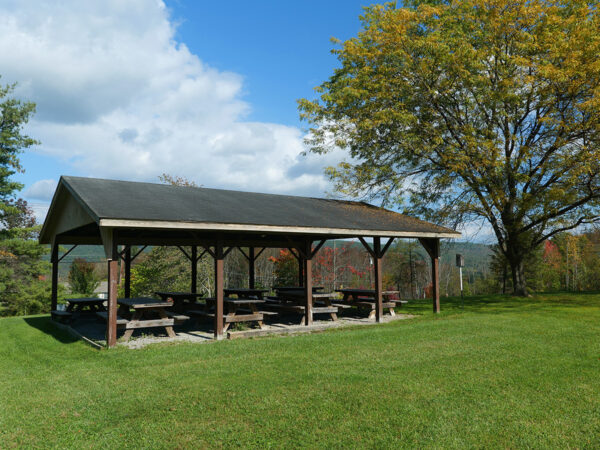The Waterman Interpretive Center houses a museum, live animal residents, a reference library, a gift shop, educational displays, and classroom space, all open to the public. Hikers can enjoy the trails that traverse a variety of habitats across rolling terrain. During the week and when school is in session, the trails are a bit quieter. During the summer, kids’ camps are ongoing and the center offers regular guided hikes and talks which provide opportunities to learn and connect with other nature lovers. Bear both of these factors in mind when planning your trip, either as an opportunity to connect or to explore alone.
Pleasant gorges, woodlands, meadows, streams, and cascades are all encompassed in the property’s 90-plus acreage. The trail system—3.6 miles in total—is a collection of loops with intersecting shortcuts so you can plan a trip with varying lengths. None of the trails are too strenuous and the average hiker could see it all in less than half a day. Trails are well maintained and marked, with placards and information kiosks providing additional context throughout. Many portions of the trails travel near or through wetlands, so expect muddy conditions in some areas, especially after the rain or during spring and fall.
Trails are open daily from dawn to dusk and the interpretive center is open Monday through Friday from 9:00 AM to 4:00 PM and Saturday from 10:00 AM to 4:00 PM (closed Sundays). Donations help support programming and the care of live animals like the ever-popular Ted, an adult Sulcata Tortoise.
Sometimes referred to as simply as the Waterman Center, the Waterman Conservation Education Center also includes a collection of nature preserves that vary in size and function. The center acts as a steward for a hilltop habitat (Pettus Hill Nature Preserve), a floodplain island (Hiawatha Island), hiking destinations such as Waterman Interpretive Center and IBM Glen, and maintains birding gems like the Brick Pond Wetland Preserve and Apalachin Marsh. Each property offers opportunities for recreation and education to outdoor enthusiasts of all ages. The preserves are not vast in size, but rather islands of natural habitat, making them ideal for lingering and observing. Walk softly and quietly and you are sure to see some wildlife, especially during migration seasons when birds are abundant. Because all of these properties provide safe havens for wildlife and migratory birds, dogs are only allowed at IBM Glen where they must be on a leash.

